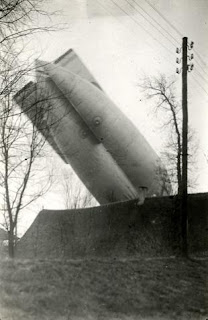*****
Welcome to the Steampunk Landing Newsletter. It is our mission to entertain, educate, and inspire you ... all within the general genre known as Steampunk.
We do not view you as subscribers but as associates, members of our club, and our friends who will contribute in many ways.
We have a confession, we know very little about steampunk lit even though it has been widely acclaimed as an inventive and original genre of fiction. Steampunk appears to be speculative fiction with a lot of dirigibles, old fashioned flight goggles and corsets thrown in for good measure.
All that Victorian clothing and steam-powered robots suggests science fiction with a dash of fantasy. So, of course we want to know more!
The creation of the ‘steampunk’ term is often attributed to the science fiction author K.W. Jeter, who used it in a letter to Locus Magazine. He was trying to find a way to describe Victorian fantasy novels like those written by himself (Morlock Night and Infernal Devices), Tim Powers (The Anubis Gates) and James Blaylock (Homunculus).
He believed more people would be interested in this kind of writing if only there was a general term that described it as a genre. “Something based on the appropriate technology of the era; like ‘steampunks,’” Jeter wrote. The label stuck and those early works helped define the genre.
It’s still inadequate to explain away this genre as ‘Victorian Fantasy.’ The most common steampunk theme is to show a world where humanity, usually set in the Victorian era, has adopted a line of technology from the future.
A good example would be The Difference Engine by William Gibson and Bruce Sterling in which the theoretical mechanical computer that Charles Babbage devised in 1822 was successfully built and led to the dawn of the Information Age in the late 19th century rather than 100 years later. This novel also introduced steampunk to a wider audience. Other examples of technology mash-ups that might be included in steampunk literature could be spring-powered robots, 22nd century zeppelins, Edwardian atomic power or a steam-powered hovercraft.
As steampunk evolved, fantasy elements began to appear. For instance, Tim Powers’ novel, The Anubis Gates, involves a group of magicians among the beggars of the 19th century London underworld.
Steampunk is a relatively new style of writing, having only really existed as a true genre since the late 1980s, but the roots of steampunk can be traced back to the 19th century where Jules Verne, H.G. Wells, Mary Shelley and other authors were using steampunkish themes and their writing paved the way for the modern genre.
We do not view you as subscribers but as associates, members of our club, and our friends who will contribute in many ways.
*****
All that Victorian clothing and steam-powered robots suggests science fiction with a dash of fantasy. So, of course we want to know more!
The creation of the ‘steampunk’ term is often attributed to the science fiction author K.W. Jeter, who used it in a letter to Locus Magazine. He was trying to find a way to describe Victorian fantasy novels like those written by himself (Morlock Night and Infernal Devices), Tim Powers (The Anubis Gates) and James Blaylock (Homunculus).
He believed more people would be interested in this kind of writing if only there was a general term that described it as a genre. “Something based on the appropriate technology of the era; like ‘steampunks,’” Jeter wrote. The label stuck and those early works helped define the genre.
It’s still inadequate to explain away this genre as ‘Victorian Fantasy.’ The most common steampunk theme is to show a world where humanity, usually set in the Victorian era, has adopted a line of technology from the future.
A good example would be The Difference Engine by William Gibson and Bruce Sterling in which the theoretical mechanical computer that Charles Babbage devised in 1822 was successfully built and led to the dawn of the Information Age in the late 19th century rather than 100 years later. This novel also introduced steampunk to a wider audience. Other examples of technology mash-ups that might be included in steampunk literature could be spring-powered robots, 22nd century zeppelins, Edwardian atomic power or a steam-powered hovercraft.
As steampunk evolved, fantasy elements began to appear. For instance, Tim Powers’ novel, The Anubis Gates, involves a group of magicians among the beggars of the 19th century London underworld.
Steampunk is a relatively new style of writing, having only really existed as a true genre since the late 1980s, but the roots of steampunk can be traced back to the 19th century where Jules Verne, H.G. Wells, Mary Shelley and other authors were using steampunkish themes and their writing paved the way for the modern genre.



